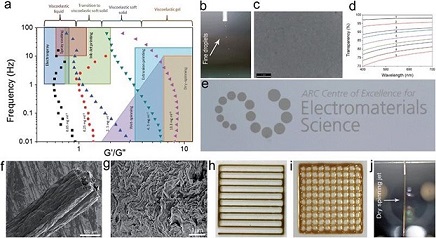• Quantum Computing and spin-qubits
Using quantum states of materials as the units of information has gained a large attention in condensed matter physics due to their promising application in the field of quantum computing. While the presently studied systems are rather extremely expensive or far too complicated to be integrated in practical devices, the research on development of novel cost effective and efficient systems and materials is an urgent requirement of this newly born field of science and technology. At CMNL, we are working on spin quantum state of engineered materials which can be manipulated and detected via optical and electric field excitations at room temperature. Both the design and the fabrication of quantum logic gates are of main interest in our researches.

• High rate supercapacitors
• Biaxial Liquid crystals
• Engineered polymers for tissue fabrication
• Hydrogen storage
• Structural phases of Graphene Oxide aqueous colloidal solutions
• Solar cells
• Bio applications of Graphene and Grphene Oxide nanoflakes
• Magnetic properties of Graphene Oxide
---------------------
Main Project
Developing fundamental background and processing techniques for architectural engineering of 2D materials-based hybrids and vdW heterostructures: towards cost effective multifunctional electronics systems
The successful commercialization of 2D materials requires the integration of these fascinating materials into real-world applications and devices. Since 2D materials are the active components that determine the performance of these systems, it is important to rationally design, engineer and manufacture hierarchical hybrid architectures at both nano- and macroscale that can enjoy all of the necessary requirements for given applications. However, conventional micro-fabrication techniques have proven to be inconvenient in the construction of cost-effective micro-devices, thus limiting their widespread use. To address this challenge, inspired by nature, we proposed that through a simple, yet novel solvophobic self-assembly processing approach based on 2D materials liquid crystals, nacre-mimicking, hybrid composite materials (consisting of 2D and 1D materials) can be made incorporating many of the exciting attributes of graphene and other 2D materials into practical real-world devices with emphasis on energy storage devices and thermoelectric materials. However, this method needs to be further developed encompassing the mushrooming family of 2D materials as any different material exhibits unique characteristics distinguishing them apart from others. This calls for constructing a new methodology to construct energy profiles for these materials. Herein, within this project, we aim to tackle the roots of the problem by establishing a conceptual foundation that can quantitatively describe the macroscopic source of the universal binding energy observed for layered materials. This understanding will then act as an underlying platform helping us identify which layered materials and in which order can be exfoliated to 2D materials to bring the extraordinary anisotropic properties of 2d materials molecular building blocks to the advanced manufacturing realm. This strategy can offer a simple yet effective way to fabricate flexible self-assembled 2D materials-based architectures to bring the opportunities these materials can offer for novel and existing applications, from coatings, fillers, molecular electronics, valleytronics, wearables, smart garments, RFID devices, printed electronics, organic field effective transistors, 3D bionic scaffolds and implantable biomedical devices to highly sophisticated quantum devices.

Figure 1.a) A correlation between rheological properties and the key prerequisites for various manufacturing techniques enabled us to process and fabricate GO via a wide range of industrial techniques, including b)electrospraying, c)spray coating, e) inkjet-printing, f, g) wet-spinning, h, i) 3D printing and j) dry spinning. This figure is adapted from my paper published in materials horizons.










